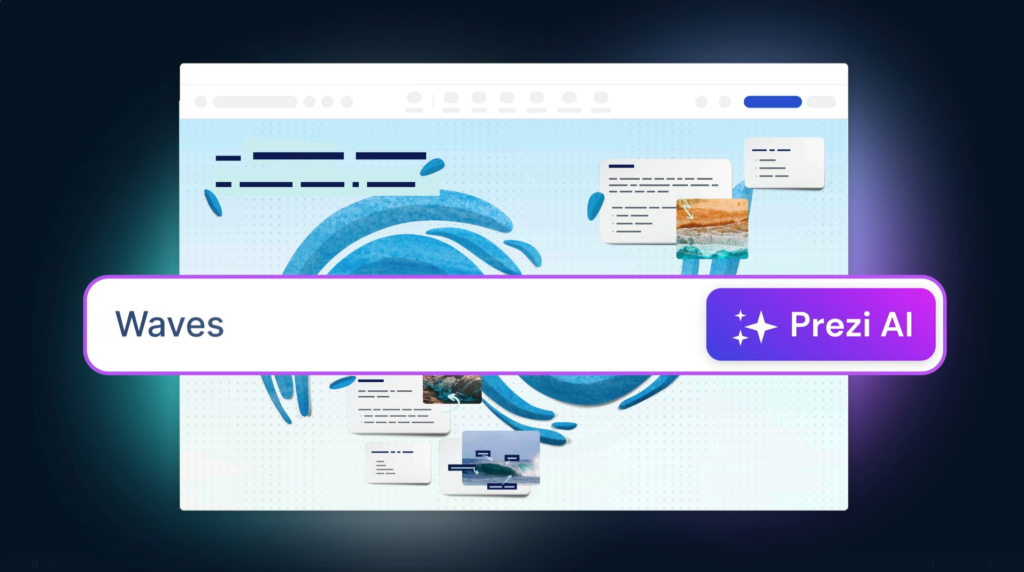Struggling to keep up with the ever-evolving skills landscape? You’re not alone. Many organizations find it challenging to provide employees with the training they need to succeed in today’s rapidly changing work environment. AI tools for learning and development (L&D) offer a solution, empowering L&D teams to create more agile, personalized, and effective training programs. From identifying skill gaps to delivering targeted learning interventions, AI is transforming the way organizations approach L&D.
Whether you’re looking to onboard faster, train more effectively, or deliver engaging experiences across teams, there’s an AI solution ready to help. In this article, we’ll explore the AI tools L&D professionals are using, along with tips to help you choose the right fit for your team.

What are AI tools for learning and development?
AI tools for L&D are software applications that use artificial intelligence to improve employee learning and growth. These tools can automate tasks, personalize learning experiences, and offer valuable insights into learner progress and training program effectiveness. Think of them as smart assistants helping L&D professionals create, deliver, and manage training more efficiently, ultimately leading to a more skilled and adaptable workforce.
Key features of AI-powered L&D tools
Several key features distinguish AI tools for L&D from traditional learning platforms. AI can create training materials quickly and affordably, giving you more resources at a lower cost. This is especially helpful for small businesses or teams with limited budgets. AI also tailors training to individual needs and preferences. Learners who absorb information best through videos will receive video training, while those who prefer step-by-step instructions will get that instead. This personalized approach helps ensure everyone gets the most out of the training. Finally, AI analyzes vast amounts of data to provide insightful reports on how learning content impacts business results. This data-driven approach helps L&D professionals make informed decisions about future training programs.
Types of AI in L&D
AI in L&D encompasses a range of technologies, all working to simulate human intelligence in machines, enabling tasks like learning and problem-solving using algorithms and data. AI tools are most effective when integrated thoughtfully into the design process. Simply asking AI to create a whole course without any human input is often ineffective. While AI offers significant potential to improve L&D, successful implementation requires careful planning and consideration of ethical and practical challenges.

How AI enhances learning and development
AI is transforming learning and development, offering exciting new ways to create engaging and effective training programs. Here’s how AI is making a difference:
Personalized learning experiences
AI can tailor training to individual learning preferences and create a truly personalized experience. Imagine a system that automatically provides video tutorials to visual learners while offering step-by-step instructions to those who prefer a more structured approach. This level of personalization boosts engagement and knowledge retention. AI can also identify individual and team skill gaps, ensuring training addresses specific needs and weaknesses. This targeted approach helps learners focus on areas where they need the most support.
Deliver training efficiently
Creating training materials can be time-consuming and expensive. AI streamlines this process by automating content creation, management, and delivery. This frees up instructional designers to focus on strategy and learner engagement, rather than administrative tasks.

Use data-driven insights for better decisions
AI provides valuable data-driven insights into training effectiveness. By analyzing learning patterns, preferences, and performance data, AI can pinpoint what’s working and what’s not. This allows L&D teams to refine training programs, maximize impact, and demonstrate a return on investment. Companies can save up to 30% on training costs by leveraging AI’s analytical capabilities. This approach ensures that training programs are continually optimized for better results.
Popular AI tools in learning and development
More and more L&D pros are using AI-powered tools. These tools can help you create engaging learning experiences, personalize training, and use data to make better decisions. Here are a few examples:
AI-powered learning management systems
AI-powered learning management systems (LMS) take traditional learning platforms to the next level. Think of an LMS as your central hub for all things training. Now, imagine that hub with a built-in brain. AI analyzes mountains of data to give you insightful reports on how your learning content impacts business results. This helps you fine-tune your training programs and make sure they truly meet the needs of your workforce. Some LMS platforms even use AI to recommend relevant learning content to employees based on their roles and skill gaps.
Intelligent tutoring systems
Intelligent tutoring systems (ITS) act like personalized coaches for each learner. They leverage AI to adapt to individual learning needs, offering customized guidance and support. This one-on-one approach can significantly improve learner engagement and outcomes. Imagine a system that knows when a learner is struggling and automatically adjusts the difficulty or provides additional resources. That’s the power of ITS. They can also offer personalized feedback, helping learners stay motivated and on track.

Use natural language processing for content creation
Creating engaging and effective learning content can be time-consuming. AI can help streamline this process. Using natural language processing (NLP), AI can analyze your existing learning content to identify areas for improvement and suggest ways to make it more relevant and engaging. Some AI tools can even generate quizzes and other interactive elements automatically, saving you valuable time and effort. This allows you to focus on the strategic aspects of L&D, like curriculum design and learner support.
Adaptive learning platforms
Adaptive learning platforms use AI to tailor education to individual student needs and learning styles. These platforms adjust the pace and content based on learner responses, ensuring everyone progresses at their own speed. This personalized approach can be particularly helpful for diverse groups of learners, as it caters to different learning preferences and knowledge levels. By providing targeted content and support, adaptive learning platforms help learners stay engaged and achieve better outcomes.
AI presentation makers
AI presentation makers are quickly becoming go-to tools for learning and development professionals looking to create more engaging and effective training materials. These tools use artificial intelligence to help you generate visually compelling presentations based on simple prompts or content inputs.
One of which is Prezi AI, which enables users to turn ideas into dynamic, conversational presentations that break away from static slide formats. It’s especially useful for transforming dense training topics into interactive, easy-to-understand visual narratives that boost learner engagement and retention. Whether you’re developing onboarding materials, compliance training, or upskilling programs, AI presentation makers like Prezi AI allow you to deliver content in a personalized, attention-grabbing way. The speed and ease of use for AI tools for training make them ideal for time-strapped teams who need to produce high-quality learning content quickly and consistently.

Why Prezi AI belongs in every L&D toolkit
When it comes to making training more effective, memorable, and scalable, Prezi AI is a standout choice. Designed with visual storytelling in mind, Prezi AI helps L&D professionals create compelling, customized presentations in less time, without sacrificing creativity or quality.
Here’s how Prezi AI supports every stage of the learning and development process:
Jumpstart content creation
With Prezi AI, you can generate a polished outline from just a simple prompt. Whether you’re building a workshop, onboarding module, or quarterly training update, the tool helps you go from idea to visual structure in seconds, saving hours of manual planning.
Design with learning impact in mind
Unlike linear slides, Prezi’s zooming canvas lets you show relationships between ideas, making complex topics easier to understand and remember. The AI provides layout and formatting suggestions based on your topic, so your training content is not only informative but visually compelling.
Personalize at scale
Need to tailor content for different departments or learning styles? Prezi AI makes it easy to adjust language, visuals, and tone depending on your audience. You can create variations of the same training module with minimal effort, ideal for role-specific or localized training.
Enable microlearning with video
Pair Prezi AI with Prezi Video to turn your presentations into on-camera explainer videos. This is perfect for asynchronous learning, remote teams, and busy schedules. You can also track engagement through Prezi for Teams analytics to see what’s resonating with learners.

Save time, stay creative
Prezi AI automates repetitive content tasks, like slide formatting, layout optimization, and brainstorming, so your L&D team can focus on what matters most: strategic learning experiences.
Benefits of using AI tools in L&D
Using AI in learning and development offers several key advantages for companies looking to improve their training programs. Here’s a closer look at some of the core benefits:
Train faster and more cost-effectively
One of the most significant benefits of AI-powered L&D tools is the ability to create training materials quickly and affordably. AI can automate content creation, generate quizzes, and even personalize learning paths, freeing up your L&D team to focus on higher-level tasks. This efficiency translates to more training resources available at a lower cost, maximizing your L&D budget. AI tools for training can significantly reduce the time and expense traditionally associated with developing training programs.
Tailor learning paths
AI excels at tailoring training to individual needs and preferences. This personalized approach ensures learners get the most relevant content in the format that works best for them. If someone learns best through videos, AI can deliver video-based training. If another learner prefers step-by-step instructions, the AI can adapt to that preference. This customized approach improves engagement and leads to better learning outcomes. By adapting to individual learning styles and addressing specific strengths and weaknesses, AI creates a more effective and enjoyable learning experience.

Track feedback and performance in real time
AI provides real-time insights into learner progress and the effectiveness of training programs. This data-driven approach allows you to identify areas where training is working well and where it needs improvement. AI can track learner engagement, assess knowledge retention, and provide comprehensive feedback reports. This continuous monitoring enables you to make data-backed decisions to optimize your training programs and ensure they deliver the desired results. This real-time feedback loop is invaluable for creating more effective and impactful L&D initiatives.
Why L&D teams are turning to AI
Traditional training methods often struggle to keep up with today’s pace of work. AI changes that.
With automation and personalization at the core, AI-powered tools help L&D teams in various ways. One of the ways is saving them time by automating repetitive tasks like content creation, translations, or quiz generation. Additionally, AI tools for training will personalize learning experiences based on roles, skill levels, or learning styles. They can also improve learner engagement with dynamic, multimedia-rich content, as well as track and measure training impact with greater accuracy. From onboarding to continuous development, AI offers a scalable and smart way to keep teams growing.
Challenges of implementing AI in L&D
While AI offers incredible potential for learning and development, it’s essential to acknowledge and address the challenges that come with implementing these technologies. Understanding these hurdles will help you create a more thoughtful and effective AI strategy.
Address data privacy and security concerns
AI systems in L&D often collect and analyze large amounts of learner data, including personal information, learning patterns, and performance metrics. Protecting this data is paramount. Organizations must comply with data protection regulations like GDPR and implement robust security measures to safeguard sensitive information. Think about encryption methods, access controls, and regular security audits to ensure your learners’ data remains private and protected.

Address bias and fairness
AI systems learn from the data they are trained on. If this data reflects existing biases, the AI system may perpetuate or even amplify those biases, leading to unfair or discriminatory outcomes. For example, a biased algorithm might recommend different learning paths or provide different feedback based on demographics rather than individual needs. It’s crucial to conduct careful monitoring and regular audits of your AI tools for training and development to identify and mitigate these biases, ensuring fair and equitable learning opportunities for everyone.
Balance AI and human touch
While AI can automate tasks, personalize learning, and provide valuable insights, it can’t replace the human element. Empathy, mentorship, and social interaction remain vital in educational settings. The most effective approach combines AI capabilities with the expertise of human instructors. Strive for a balance that leverages AI to enhance, not replace, the human connection. Blended learning models offer a practical way to combine online and in-person learning experiences.
Best practices for adopting AI in L&D
Successfully integrating AI into your learning and development program requires a strategic approach. Begin with a small pilot project focused on a specific area where AI can make a tangible difference. This allows you to test and refine your approach before a company-wide rollout. Ensure human oversight throughout the process, using AI to augment, not replace, human expertise.

Continuously evaluate the performance of your AI-powered L&D initiatives, using data-driven insights to make improvements and demonstrate value. Here’s how to get started:
Start small and scale gradually
Think of AI as a tool, not a magic wand. It’s not a quick fix for all L&D challenges. Instead, focus on using AI strategically. Begin with a pilot project, targeting a specific area where AI can make a real difference. Maybe you want to personalize onboarding or automate content creation for a particular skill. Starting small lets you test the waters, gather data, and refine your approach before a company-wide rollout. This measured approach minimizes disruption and allows you to demonstrate value early on, building buy-in for future AI initiatives. AI excels at automating repetitive tasks, freeing up your team for more strategic work. For example, Prezi’s AI features can help streamline content creation, giving your team more time to focus on crafting compelling narratives and designing engaging learning experiences.
Ensure human oversight and intervention
While AI can automate tasks and analyze data, human expertise is still essential. When choosing AI tools for L&D teams, ensure it aligns with your learning goals and company values. This includes carefully curating the data used to train AI models and regularly reviewing the output for accuracy and bias. Remember, AI augments human capabilities, it doesn’t replace them. Human touch is vital for creating engaging and effective learning experiences. Consider using Prezi Video to create more impactful training videos that incorporate your team’s expertise and personality.
Evaluate and improve continuously
AI provides a wealth of data that can help you understand what’s working and what’s not. Regularly evaluate the performance of your AI-powered L&D programs. Track key metrics like learner engagement, knowledge retention, and the impact on business outcomes. Use this data to refine your AI algorithms, adjust your learning content, and continuously improve the effectiveness of your L&D initiatives. AI can track training effectiveness, leading to better training and cost savings. By consistently analyzing data and making adjustments, you can ensure your AI tools are delivering real value. Prezi for Teams offers analytics to help you understand how your presentations are performing and identify areas for improvement.
Measure the impact of AI tools in L&D
Knowing how to measure the impact of your AI tools for training and development is crucial for demonstrating their value and making informed decisions about future L&D investments. By tracking the right metrics, you can show how AI improves learning outcomes, boosts employee performance, and contributes to overall business goals.

Key performance indicators for AI-enhanced learning
Start by identifying key performance indicators (KPIs) that align with your learning objectives. These could include metrics like completion rates, assessment scores, and learner engagement. AI can help you track these KPIs more efficiently and accurately than traditional methods. For example, AI-powered learning platforms can automatically collect data on learner progress and provide real-time insights into areas where learners are excelling or struggling. This data-driven approach allows you to identify areas for improvement in your learning programs and personalize the learning experience for each individual. AI can also help you measure the effectiveness of different learning interventions, such as personalized recommendations or gamified learning modules, so you can refine your strategies over time.
Track ROI of AI implementations
Beyond measuring learning outcomes, it’s essential to track the return on investment (ROI) of your AI implementations. This involves demonstrating how AI tools for L&D teams contribute to broader business objectives. One way to do this is by linking learning outcomes to business metrics, such as employee productivity, customer satisfaction, or sales performance. For instance, if you implement an AI-powered training program for your sales team, you can track how the training impacts their sales numbers. AI can also help you analyze vast amounts of data to identify patterns and correlations between learning activities and business results. This data-driven approach provides valuable insights into how learning content impacts business outcomes and helps you justify the investment in AI tools.
Future trends in AI for learning and development
The future of learning and development is bright, thanks to advancements in AI. These emerging trends promise to reshape how we learn and grow professionally:
Advanced personalization techniques
Imagine training programs that adapt perfectly to your learning style. AI makes this possible by tailoring learning to individual needs. If you’re a visual learner, you might receive more video content. If you prefer hands-on activities, the AI can adjust accordingly. This level of personalization boosts engagement and knowledge retention. AI can also identify individual and team skill gaps, allowing for targeted training interventions. This personalized approach ensures that everyone gets the most out of their learning experience.
Virtual and augmented reality integration
AI is also transforming learning through immersive experiences. Think AI-powered games and interactive platforms like Kahoot! or Minecraft Education Edition. These tools make learning fun and engaging, turning training into an interactive adventure. Virtual and augmented reality can simulate real-world scenarios, providing learners with valuable hands-on experience in a safe environment. This immersive approach can be particularly effective for training in fields like healthcare, engineering, and manufacturing.

AI-driven skill gap analysis
Staying ahead of the curve is crucial in today’s rapidly evolving job market. AI helps organizations anticipate future skill needs by analyzing trends and data. This proactive approach to training ensures that teams possess the skills necessary for success. AI can also analyze learning patterns and performance data to provide insights into how learning content impacts business results. This data-driven approach empowers organizations to make informed decisions about their L&D strategies and maximize their return on investment. By understanding which skills are in demand and how learning programs contribute to business outcomes, organizations can make strategic investments in their workforce.
Choose the right AI tools for your L&D strategy
Picking the right AI tools for your learning and development (L&D) program is crucial for success. It’s a decision that requires careful consideration of your organization’s specific needs and the capabilities of the tools themselves. Here’s how to approach this process:
Assess organizational needs
Before exploring AI tools, understand your organization’s learning needs and goals. What are the biggest skill gaps you need to address? What are your current L&D resources and budget? How do your employees prefer to learn? AI can personalize training to individual preferences, offering video training for visual learners and step-by-step instructions for those who prefer a more structured approach. This targeted approach ensures everyone gets the most effective learning experience. Beyond individual learning styles, consider how AI can analyze data on learning patterns and performance to provide insights into how learning content impacts your business results. This data-driven approach helps you connect L&D initiatives directly to business outcomes, demonstrating the value of your programs.
Evaluate tool compatibility and scalability
Once you have a clear picture of your needs, you can start evaluating AI tools. Think about how well each tool integrates with your existing learning management system (LMS) and other L&D software. The most effective AI tools are those that become part of your design process. Instead of asking AI to create an entire course, use it strategically at different stages of your development process, much like the ADDIE model. This strategic integration ensures that AI enhances your existing workflows. Also, consider the scalability of the tool. Can it handle your current training needs and accommodate future growth? AI can create training materials quickly and affordably, providing more resources at a lower cost, but ensure the tools you choose can adapt as your organization evolves. By carefully assessing your needs and evaluating tool compatibility, you can choose AI tools that will truly empower your L&D program.
Build a stronger L&D strategy with AI
AI is revolutionizing the way learning and development teams train, engage, and upskill their workforce. By embracing tools that automate content creation, personalize experiences, and deliver data-driven insights, organizations can build smarter, more scalable L&D strategies. But successful integration requires more than just smart technology—it takes thoughtful planning, human oversight, and continuous optimization.
Whether you’re just starting your AI journey or looking to refine your current programs, the key is to start small, measure impact, and scale strategically. With tools like Prezi AI, you can combine the power of automation with engaging design to create impactful training experiences that truly resonate.
